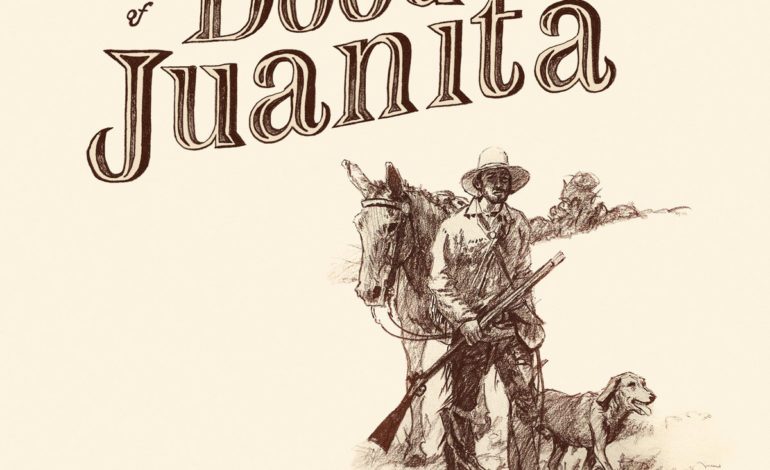

Dood & Juanita: Sturgill Simpson’s last solo album?
In the light of the American pageant, cowboys are perhaps the most iconic archetype—and the most elusive. In musical lore, the incredible importance and diversity of the cowboy lifestyle is portrayed by artists like Marty Robbins (“Big Iron”), George Strait (“The Cowboy Rides Away”) and James Taylor (“Sweet Baby James”). Now, with The Ballad of Dood & Juanita, Sturgill Simpson is adding his hat to the ring.
In a recent interview, Rolling Stone portrayed contemporary Simpson as an “undeniably strong identity”—a storied hard worker with a rebellious streak. In Dood & Juanita, a concept album touted to be his last, Simpson cast his rifle-toting hero and the rest of the tall-tale cast in similar boots. Through solid musicianship and narrative control, Simpson evokes emotional investment and connection from his listeners throughout the 10-track album.
The prologue to the album is a march, akin to tunes from civil war snare drum corps, which places listeners in the Kentucky Hills in 1868. People hear the setting and plot, and as with most westerns, the author gets straight to the point: it’s a love story featuring two mythically fated, larger-than-life Appalachian pioneers.
Dood is the first to receive attention in legendary tall-tale fashion: he is the “son of a mountain miner/ and a Shawnee maiden.” Throughout the first full-length track on the album, Simpson and his band show people their chops; right from the get-go, the trained guitar, fiddle and harmonica introduction paints the hero in a complex light. When the song starts to pick up and thump near the chorus, listeners will feel justified in regarding such a fresh take on the classic Wild West storyline. Pecos Bill would be shaking in his spurs to hear of such a legend.
“One in the Saddle, One on the Ground,” a love ballad about Dood’s lover Juanita, is an exemplary prairie tune. Against the backdrop of slow-rolled banjo and overdrawn harmonica, Simpson complicates his story by revealing that Juanita has been taken captive by bandits. The song pushes forward with typical rising action vibes. Finally, people are introduced to Dood’s companions—his steed Shamrock and his hound Sam, both of whom receive their dues on their respective tracks. For example, in “Shamrock,” some of the album’s most interesting musical choices align to deliver on Dood’s friendship to his horse: castanets clop away like quick hoof-beats, while the jaw harp and quick snare brushes complement the breezy lyrical rhythms in lines like, “Sure-footed as a billy goat/ With thirty-three-inch ears/ Clog dance on a snake with his front two feet/ And give the coyotes the rear.” A fine flat-picked solo makes way for the rest of the band, who proceed to make trading eights look easy.
On “Played Out,” Simpson confronts yet another classic cowboy dilemma: what should our hero do when he has nowhere else to turn–when he has “holes in his buckskin” and “a biting feeling that’s starting to gnaw?” Well, he must bury his dead dog and move on. The imagery in this song is remarkable through Dood’s description of the physical carnage of his and his companions’ bodies. The themes of loneliness and pain in the song strike deep through the work of the campfire effects, the familiar conversation between the banjo and the fiddle, and an expansive echo at the end of each line. The final act of burying his dog Sam seems pointedly metaphorical and encourages Dood in his search for revenge.
While the subsequent track called “Sam” does wonderful characterization work and spiritual harmonies, it also initiates an introspective turn in the album—a turn away from apotheosis and into a resolution for the hero. The penultimate full-length track, called “Juanita,” is a beautiful and reminiscent love song painted in the warm tones of the American Southwest where the captive Juanita is from. With a sway and swagger accompanied by castanets and Spanish guitar, Simpson croons lyrics like “You are an ocean/ I am a grain of sand” to show his hero’s devotion to his cause. The interlude in “Juanita” consists of delicate phrases by the string section, harmonica, and guitar.
On “Go in Peace,” listeners will hop along with the reeling banjo, traveling bass walk and that trusty jaw harp. It is a song of elation and certainly follows more from the bluegrass tradition than the conclusive track “Ol’ Dood (Part II).” In this last track on the album, Simpson returns to the original arrangement from “Ol’ Dood (Part I),” coming full circle by explaining how Dood saves Juanita from her captor Seamus—even going so far as to follow the rifle shot that seals the deal.
Sturgill Simpson’s album The Ballad of Dood & Juanita shows the artist’s virtuosity and aesthetic authenticity in myriad ways, including painstaking attention to lyrical and compositional detail. As his cowboy walks into the sunset and Simpson prepares for his own important on-screen role, he must be dreaming deeply about his next musical venture.
